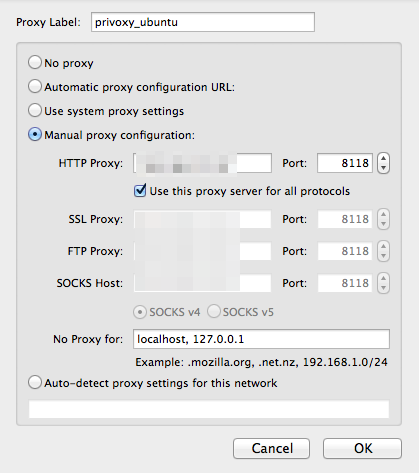
Privoxy has a very flexible configuration and can be customized to suit individual needs and tastes, and can be used for both stand-alone systems and multi-user networks. It is based on the Internet Junkbuster, which was discontinued in 1998. It can run on Mac OS X, many Linux variants, Debian, Windows, Solaris, OS/2, and AmigaOS. Popular open source Alternatives to Privoxy for Mac, Linux, Windows, BSD, Firefox and more. Explore 18 apps like Privoxy, all suggested and ranked by the AlternativeTo user.
2.5. What is the proxy address of Privoxy?

If you set up the Privoxy to run on the computer you browse from (rather than your ISP's server or some networked computer on a LAN), the proxy will be on 127.0.0.1 (sometimes referred to as 'localhost', which is the special name used by every computer on the Internet to refer to itself) and the port will be 8118 (unless you used the listen-address config option to tell Privoxy to run on a different port).
When configuring your browser's proxy settings you typically enter the word 'localhost' or the IP address '127.0.0.1' in the boxes next to 'HTTP' and 'Secure' (HTTPS) and then the number '8118' for 'port'. This tells your browser to send all web requests to Privoxy instead of directly to the Internet.
Privoxy can also be used to proxy for a Local Area Network. In this case, your would enter either the IP address of the LAN host where Privoxy is running, or the equivalent hostname, e.g. 192.168.1.1. Port assignment would be same as above. Note that Privoxy doesn't listen on any LAN interfaces by default.

Privoxy Mac Uninstall

Privoxy Setup
Privoxy does not currently handle any other protocols such as FTP, SMTP, IM, IRC, ICQ, etc.